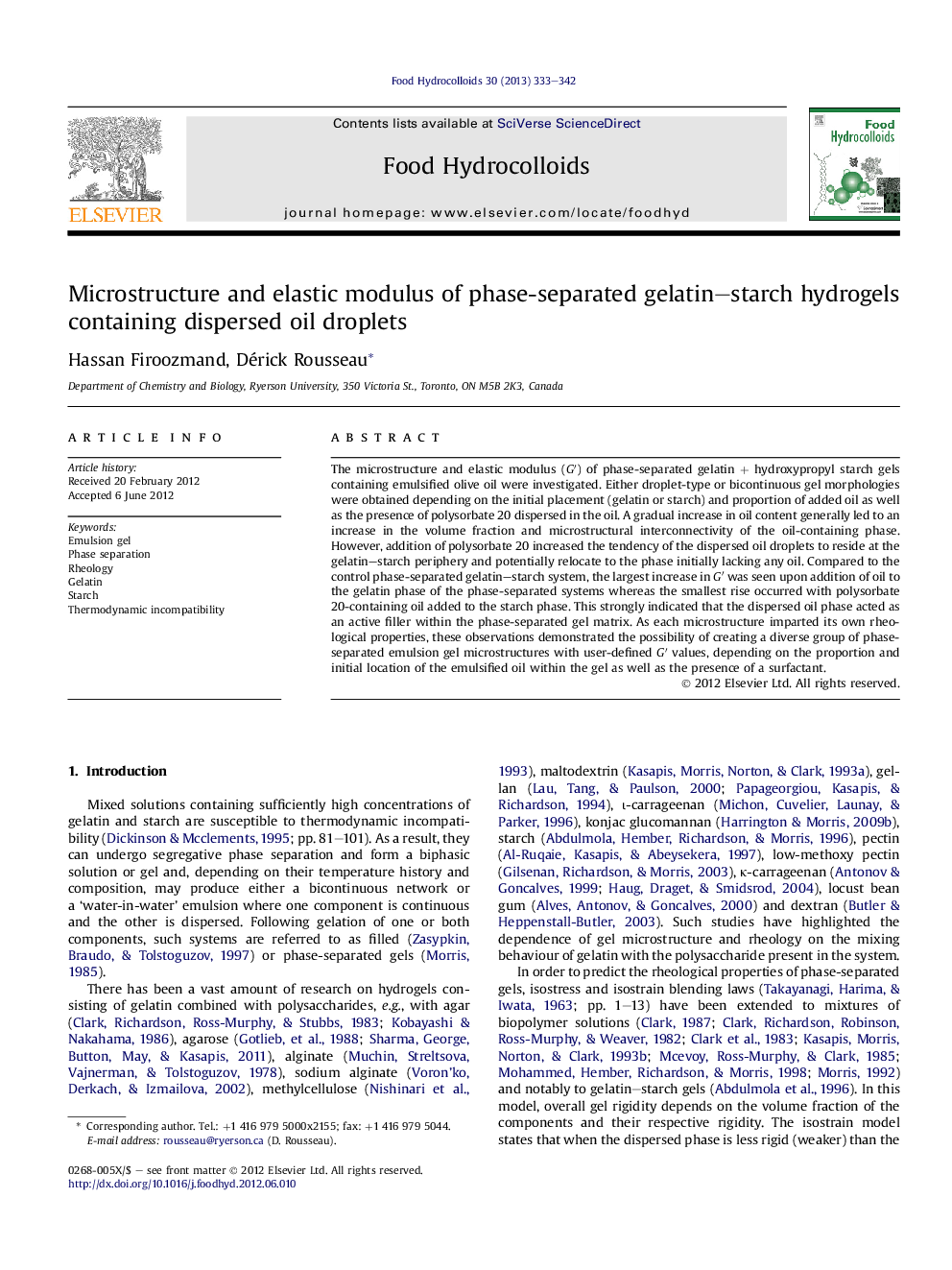| Article ID | Journal | Published Year | Pages | File Type |
|---|---|---|---|---|
| 604757 | Food Hydrocolloids | 2013 | 10 Pages |
The microstructure and elastic modulus (G′) of phase-separated gelatin + hydroxypropyl starch gels containing emulsified olive oil were investigated. Either droplet-type or bicontinuous gel morphologies were obtained depending on the initial placement (gelatin or starch) and proportion of added oil as well as the presence of polysorbate 20 dispersed in the oil. A gradual increase in oil content generally led to an increase in the volume fraction and microstructural interconnectivity of the oil-containing phase. However, addition of polysorbate 20 increased the tendency of the dispersed oil droplets to reside at the gelatin–starch periphery and potentially relocate to the phase initially lacking any oil. Compared to the control phase-separated gelatin–starch system, the largest increase in G′ was seen upon addition of oil to the gelatin phase of the phase-separated systems whereas the smallest rise occurred with polysorbate 20-containing oil added to the starch phase. This strongly indicated that the dispersed oil phase acted as an active filler within the phase-separated gel matrix. As each microstructure imparted its own rheological properties, these observations demonstrated the possibility of creating a diverse group of phase-separated emulsion gel microstructures with user-defined G′ values, depending on the proportion and initial location of the emulsified oil within the gel as well as the presence of a surfactant.
Graphical abstractMicrostructure of a gelatin–starch hydrogel is related to the spatial distribution of oil droplets.Figure optionsDownload full-size imageDownload as PowerPoint slide
